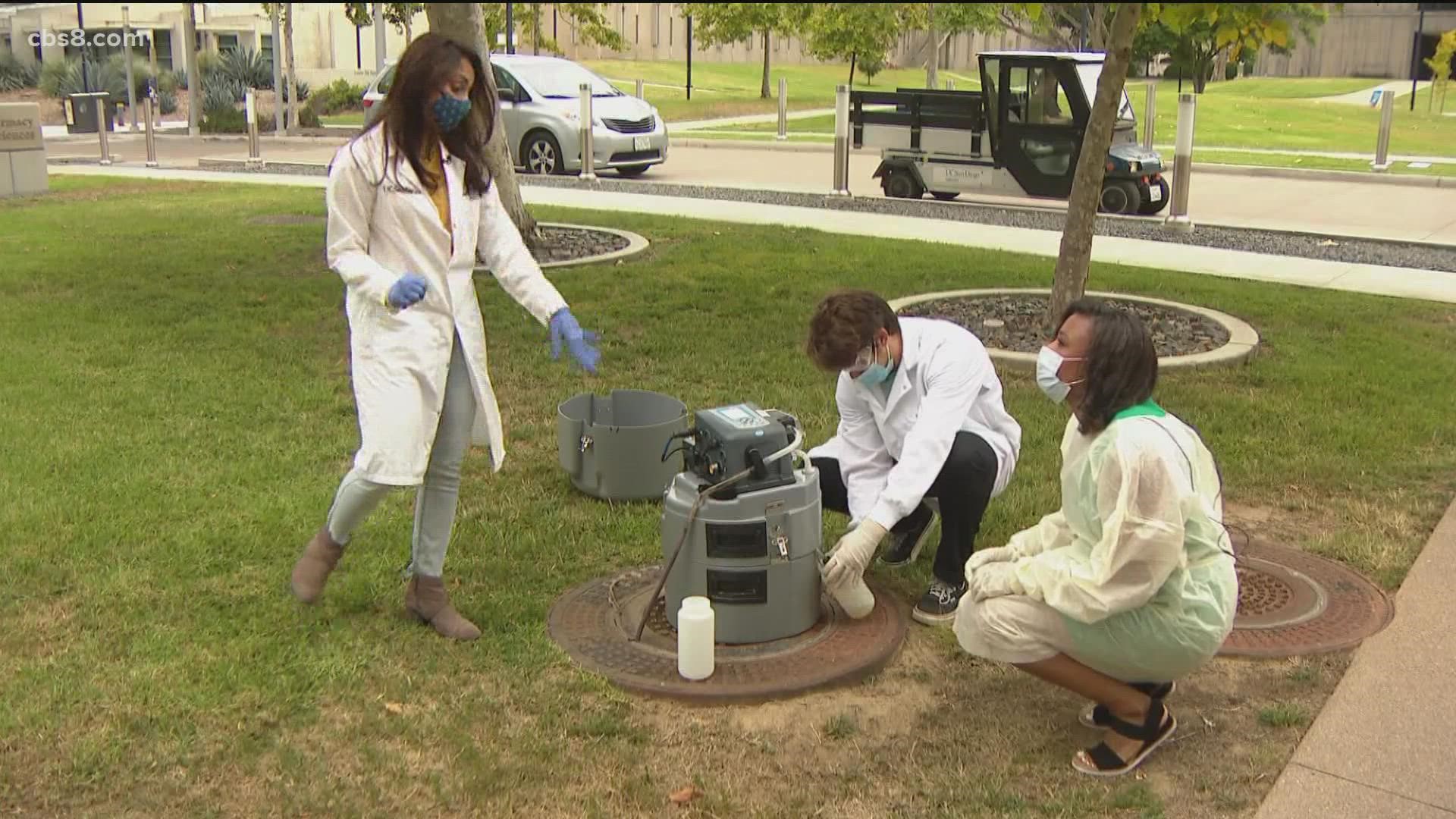SAN DIEGO — Doctors at the University of California San Diego School of Medicine are innovating the way they detect COVID-19 in an effort to keep learning in person. They're testing the wastewater on campus and isolating any positive cases to singular buildings to stop an outbreak in its tracks.
Here's how it works: A machine is placed on manholes to corresponding buildings. Inside, the wastewater is sucked through a tube and is collected in a bottle. The wastewater in that bottle is then tested for the COVID-19 genome or any of its variants.
If the sample comes back negative, there’s no need to worry. However, if it comes back positive, all the residents of that building will be alerted via email saying this building is a potential source of wastewater positive COVID test and they are strongly encouraged to get tested as soon as possible.
Dr. Smruthi Karthikeyan is a postdoctoral researcher at UCSD School of Medicine. She’s one of the minds behind the wastewater testing on campus.
"It's just not feasible to have everyone test every single day," Dr. Karthikeyan said. "This sort of passive surveillance gives them some mental peace."
She believes sharing this technology across communities would be beneficial.
"Having a handle on how the infection levels are [by] testing sewage is much easier, especially in communities where clinical testing is limited but the infection rate is high," Karthikeyan said. "It picks up symptomatic or asymptomatic infections based on anyone who's shedding it in their poop. It's programmed to pick up wastewater every 10 to 15 minutes. It has a bottle inside where it stores the wastewater collected over a 24-hour period and every day we bring these back to our lab on campus. We push it to an interactive map which has all the buildings on the UCSD campus and it gets updated everyday."
She said screening wastewater can stop an outbreak in its tracks. This method of testing isn’t limited to residential buildings on campus. Every building has a corresponding manhole with the testing machine attached.
Dr. Karthikeyan said the alert is similar for those building users.
"If you or someone used the bathroom in this building between this time and this time, please get tested," she said. "All they do is go walk to the bottom of their dorm or residence building and they would see a self-test COVID vending machine. It saves a lot of time getting an appointment, standing in lines to get tested. This is right in the building."
They are using already existing infrastructure with robots taking the wastewater samples. Not only are they catching positive cases, but they're also cutting down the wait time with testing and getting results back in mere hours.
Dr. Karthikeyan said they’ve “enabled early detection of 85% of all on-campus cases. This makes the entire process for processing 126 samples come down to 4 to 5 hours."
She said as UCSD goes back to full in-person learning this fall, the passive COVID surveillance system will be crucial to making sure their campus is safe from outbreaks and possibly regressive COVID-19 restrictions.
WATCH RELATED: San Diego County opens up additional COVID-19 testing sites

